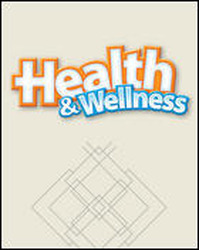
Health & Wellness © 2008Unit 6: Personal Health and Physical ActivityWebQuest ProjectsThe Importance of Exercise for TeensIntroduction Often, teens have a warped sense of the importance and value of exercise. Some teens may use it to an extreme to control weight or to shape their bodies in certain ways. Some may feel as if physical activity and exercise simply are not interesting to them. They may feel that those kinds of activities are only for people who excel at sports. None of these attitudes is healthful and none of them helps teens to maintain good health through physical activity. In this WebQuest, students will research the importance of exercise and physical activity, especially as it relates to teens. They will explore the different physical and emotional health benefits that physical activity provides, and conduct an experiment regarding their own physical activity. Task Students will need to answer a set of 4 questions about the importance of exercise during the teen years and the many health benefits it provides. After completing the Internet research and answering the questions, students will create physical activity plan for themselves. For a period of 3 weeks, they need to set a goal of at least 60 minutes of physical activity per day, which is the recommendation of The President's Council on Physical Fitness and Sports for children and teens ages 6-17. Students will record their activities for each day in the chart provided. Also, they will write one journal entry at the end of each of the 3 weeks discussing their activities for that week, what they liked or didn't like, and how the activities made them feel. Encourage students to record specific feelings they have after exercising each day in the "Comments" column, and whether they notice any obvious health benefits right away. Objectives
Resources Students will use the Internet sites to investigate the impact of both activity and inactivity on our bodies. They will learn about the countless health benefits of exercise and physical activity, and the value of beginning the habit of exercise early in life. Time 1 week to research the Internet sites and answer the questions; 3 weeks to conduct the personal activity studies Process Before conducting the research, you may remind students to read through the set of questions so they are familiar with the material. After exploring the Internet resources, students will create a 3-week plan for physical activity and use the chart provided to record their results. This chart and the process of recording results for each day will help students develop goals for physical activity that may last beyond this project. The journal entries that follow each week are meant to help students identify their strengths and preferences for different activities, as well as help them to be aware of any health benefits they experience during the 3-week plan. Evaluation Questions You may assign five points to each of the four questions for a total of 20 possible points. The answers to the questions are given below. You may rate the answer to each question by the following scale: Excellent - 5 points; Very Good - 4 points; Good - 3 points; Satisfactory - 2 points; Poor - 1 point; and Unsatisfactory - 0 points. Answers to questions about the importance of exercise for teens:
Physical Activity 3-Week Plan You may use the following scale to assess your students' charts and plans for activity.
You may assign ten points to each of the three journal entries, for a total of 30 points. An excellent journal entry should include the following:
The following scale may be helpful for assessing the entries: Excellent - 9-10 points; Very Good - 7-8 points; Good - 5-6 points; Satisfactory - 3-4 points; Poor - 1-2 points; and Unsatisfactory - 0 points. Conclusion After exploring the information on the resource Web sites, students should have a better understanding of the importance of being physically active. With recreational choices such as television, video games, and computer use, teens today face a greater threat from inactivity than ever before. By creating a plan for themselves and reflecting on the results, students will gain a better understanding of how they can take action to maintain good health. |  |















